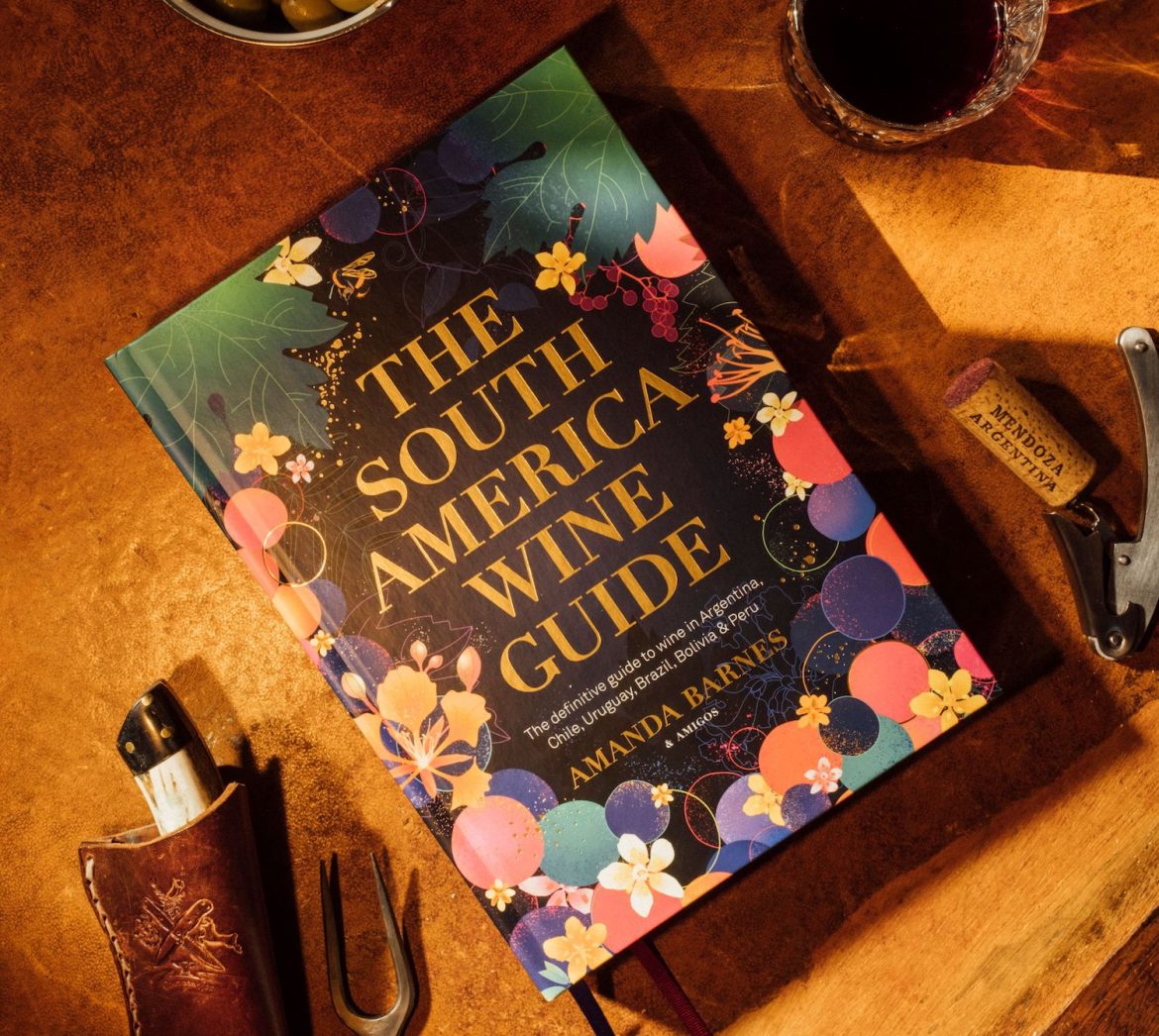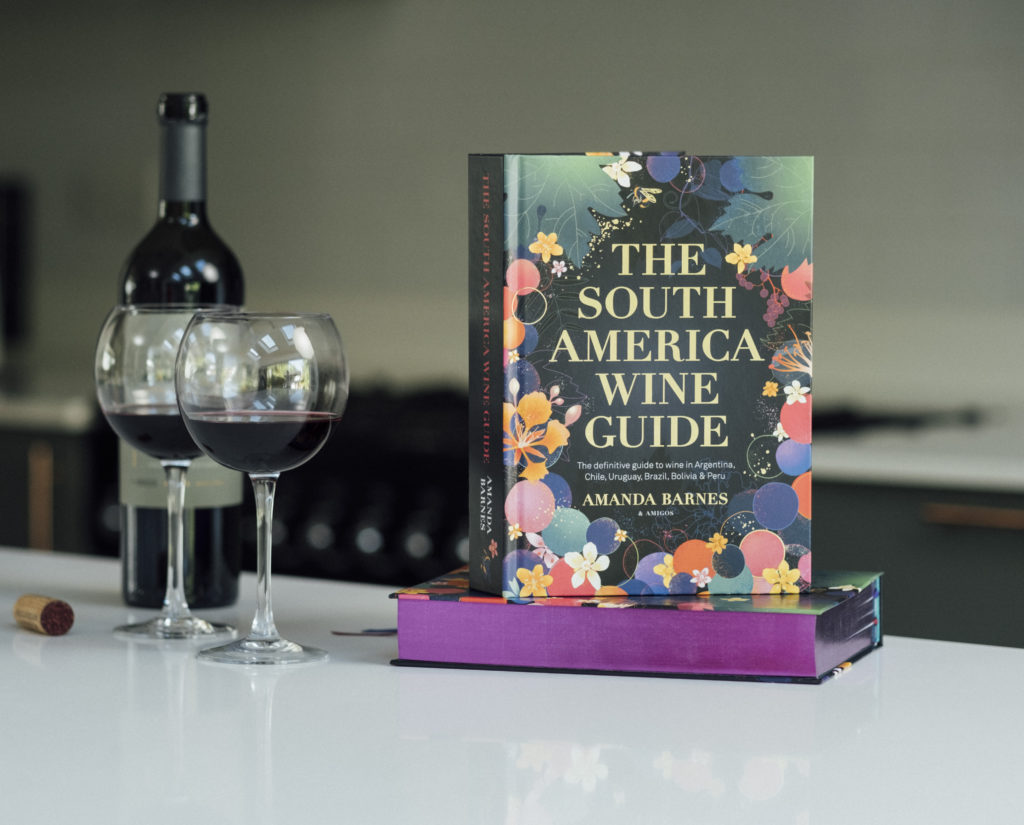South America is one the most captivating continents in the wine world. Amanda Barnes explains why she wrote The South America Wine Guide in this introduction to the book.
magical realism
(noun)
- A chiefly Latin American literary genre, that paints a realistic view of the modern world while also adding magical elements.
- An artistic genre that depicts the real world as having an undercurrent of magic or fantasy.
Surrealism comes from the reality of Latin America… it runs through the streets”
Gabriel García Márquez, prominent magical realism author from Colombia
.
I was spellbound by Latin America long before I came to live here. I had been captivated by the words of magical realism authors like Gabriel García Márquez and Jorge Luis Borges, lured by the seductive sounds of samba and tango. I was drunk too on the intoxicating images of sky-scraping ancient villages perched on the Andean mountaintops, towering granite spires looming over the ice fields of Patagonia, and rainforests spilling out onto idyllic white sand beaches.
Admittedly, I had fallen in love with South America from afar. But on my arrival to Argentine wine country in 2009, my preconceptions were blown out of the water. There were no diamonds hidden inside the oranges; I never found a book of sand, nor did samba spill out into the streets.
The image I’d conjured up of life in South America was very different to the reality of living in the wine regions of Argentina and Chile. And while I didn’t experience the whirlwind romance of exoticism I had expected or been yearning for, I did fall in love with something else. And it has certainly sent me down a rabbit hole.
I fell in love with wine, specifically South American wine, and the incredible people and places that make it. The transformational relationship between place, people and liquid felt like magical realism to me.
It’s incredible how the taste of a tangy, mouth-watering Chilean Sauvignon Blanc can take you back to the salty, cold morning fog that engulfs you as you stand shivering in the cool-coastal vineyards. Or how each glass of Malbec, which embraces you in aromas of ripe plums, violets, jarilla herbs and minerals, can immediately transport you to a spring walk through a landscape of wild herbs and flowers while the warm sunshine bakes the rocky mountainsides of Mendoza. Indeed, it still fascinates me how the exquisite taste of an old vintage can conjure up the deepest memories of a family that has grown up making these wines, generation after generation, amidst a labyrinth of ancient Criolla vines.
Just one sip of wine is enough for it to evoke far away places, people and times. And the magical wine world of South America opened my mind to a wonderland that went far beyond the wine or the looking glass.
Following my arrival, I spent the next decade living in and journeying between the wine lands of South America and researching this book. I wasn’t the only one on a journey of discovery during that period. The winemakers have also been exploring on an unprecedented scale and South America’s wines today reflect this thrilling period of change, retrospection and innovation.
If you thought you knew South American wine from the bottles you tasted ten, or even five years ago, I recommend thinking and tasting again. Quality has come on in leaps and bounds. And this, in part, is due to winemakers making their own journeys around the world. Until relatively recently, the industry remained quite insular, apart from occasional influxes of immigrants and external consultants. Today, however, South America’s winemakers are increasingly connected with and inspired by the global wine community, and this is helping them to recognise what makes their terroir exceptional.
Many of South America’s leading winemakers spend their winters visiting other countries to broaden their viticultural and winemaking experience. This has led to innovation aplenty, including pioneering new – once unthinkable – wine regions and experimenting with grape varieties from Mencia to Marselan. This increasing awareness of what is happening elsewhere has sparked greater self-awareness too. South America is now witnessing a thrilling renaissance in which long-forgotten old vines and traditional viticultural and winemaking techniques are being rediscovered and used to make some of the most exciting wines in the New World.
It’s been a privilege to experience these changes, living close to these winemakers, many of whom have become friends. Back in 2009, the first thing every winemaker did was show me the barrel room. Imported technology and the ‘Bordeaux influence’ had been king since the 1990s and wineries were tremendously proud of having the latest and best imported barrels. But nowadays the barrel room is almost the last thing winemakers want to show off — instead, they are increasingly championing minimal intervention winemaking, aiming to retain the flavours and aromas of the grapes and terroir, and keeping the wines bare for all to see. Concrete eggs, old clay tinajas, 100-year-old oak foudres and even plastic bins embody the continent’s new mantra of ‘lo-fi’ winemaking.
The emphasis and enthusiasm have also largely shifted from the cellar to the vineyard. In fact, recently when visiting wineries, I’ve probably spent more time with a miniature pickaxe than a wine glass in hand. In Argentina and Chile in particular, winemakers are more eager than ever to dig soil pits and chip away at vine roots and rocks to reveal what really makes that particular terroir unique — its DNA from the roots up. And it’s not just about rocks, but dirt too. I’ve grown used to having a handful of dirt shoved under my nose so I can smell the decomposing grape skins and the carefully assembled concoction of organic matter being brewed in their compost. Biodiversity, biodynamic and organic are more than just buzzwords today — they are fervently held philosophies that are taking some of South America’s winemakers and agronomists ever deeper into their vineyards and, ultimately, their terroir.
.
As we enter a new decade, there’s an air of self-confidence coupled with humble curiosity.
South America’s winemakers are boldly creating and discovering a wine identity all of their own, and their enthusiasm is contagious. While there are undeniable challenges in the economic and political landscape, the wine industry here has never been more exciting or diverse and it’s evolving at a thrilling pace.
Admittedly, it’s not the wine continent I imagined before arriving, but it is one that continues to blow my mind day by day — and I hope it blows yours too. In this guide, I’ve shared my experience of discovering the wine regions and spending time over the last decade with the winemakers of Argentina, Chile, Uruguay, Brazil, Bolivia and Peru.
If you haven’t yet fallen for the intoxicating charm of South America and its wines, I hope that the following pages will spark your interest in this fascinating continent and, with wine as your liquid vehicle, keep you company on your own voyage.
There’s plenty of magic to discover among the wines and vines of South America, and best of all — it’s real.
Want to read all about South American wine?

